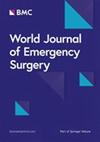Oxandrolone for burn patients: a systematic review and updated meta-analysis of randomized controlled trials from 2005 to 2025
IF 5.8
1区 医学
Q1 EMERGENCY MEDICINE
引用次数: 0
Abstract
Severe burn injuries induce hypermetabolism, leading to protein catabolism, impaired wound healing, and increased infection risk. Burn patients often experience androgen depletion, exacerbating these issues. Oxandrolone, a synthetic anabolic steroid, has shown promise in counteracting these metabolic disturbances. This updated meta-analysis evaluates the efficacy and safety of oxandrolone in burn patients, incorporating recent studies, pediatric populations, long-term outcomes, and combination therapies. This PRISMA 2020-compliant systematic review searched 9 databases (PubMed, Embase, Cochrane, WOS, WHO-ICTRP, CNKI, VIP, Wanfang, CBMdisc) for RCTs published between 2005 and 2025 using validated strategies combining controlled vocabulary (MeSH/Emtree) and free-text terms for burn/trauma AND androgen analogs (e.g., oxandrolone, nandrolone). Included trials compared androgen analogs vs. controls (placebo/standard care) in burn patients, reporting ≥ 1 predefined outcome: (1) Lean body mass (recovery phase, ≥ 14 days post-burn); (2) Mild side effects (hepatic dysfunction [ALT/AST ≥ 2 × ULN] or edema); (3) Infections; (4) Mortality; (5) Surgical procedures; (6) LOS/TBSA; (7) Absolute LOS. Dual-independent screening, data extraction, and risk-of-bias assessment (Cochrane RoB 2.0 per outcome) were performed. Random-effects meta-analyses generated standardized mean differences (SMD) for continuous outcomes and risk ratios (RR) for dichotomous outcomes with 95% CIs. Fourteen RCTs (2005–2025; n = 2822 patients: 1203 intervention vs. 1619 controls) demonstrated significant reductions in surgical procedures (SMD = − 1.25; 95% CI − 2.45 to − 0.04; p = 0.04; I2 = 97.2%) and length of stay normalized to TBSA (LOS/TBSA) (SMD = − 1.07; 95% CI − 2.43 to 0.29; p = 0.007; I2 = 98.1%), alongside enhanced anabolic recovery evidenced by increased weight gain (SMD = 0.58; 95% CI − 1.21 to 2.38; p < 0.001) and lean mass (SMD = 1.30; 95% CI − 0.47 to 3.24; p < 0.001; I2 ≥ 95.0%). However, no mortality benefit was observed (RR = 1.04; 95% CI 0.47–2.32; p = 0.913; I2 = 66.5%), with unchanged infection rates (RR = 0.83; 95% CI 0.67–1.02; p = 0.639) and no improvement in donor site healing (SMD = − 1.48; 95% CI − 2.18 to 0.77; p = 0.116). Safety analysis revealed a non-significant increase in treatment-related side effects (hepatic dysfunction/edema; RR = 1.82; 95% CI 0.52–6.42; p = 0.34), notably higher transaminase elevations in adults (19% vs. 5% placebo; p = 0.002). Oxandrolone demonstrates clinical utility in burn management by significantly reducing surgical burden (SMD = − 1.25; p = 0.04), shortening hospitalization (LOS/TBSA SMD = − 1.07; p = 0.007), and enhancing anabolic recovery (weight gain SMD = 0.58; lean mass SMD = 1.30; both p < 0.001). However, extreme heterogeneity (I2 ≥ 95.0%) and temporal limitations necessitate cautious interpretation. Critically, it confers no mortality benefit (RR = 1.04; p = 0.913), fails to reduce infections (RR = 0.83; p = 0.639), and elevates hepatotoxicity risk in adults (19% vs. 5%; p = 0.002). These findings support its adjunctive role in metabolic rehabilitation but mandate risk-stratified implementation.奥山德龙治疗烧伤患者:2005年至2025年随机对照试验的系统回顾和最新荟萃分析
严重烧伤诱导高代谢,导致蛋白质分解代谢,伤口愈合受损,感染风险增加。烧伤患者经常经历雄激素消耗,加剧了这些问题。奥雄龙,一种合成的合成代谢类固醇,已经显示出对抗这些代谢紊乱的希望。这项最新的荟萃分析评估了奥胺龙在烧伤患者中的疗效和安全性,结合了最近的研究、儿科人群、长期结果和联合治疗。这项符合PRISMA 2020标准的系统评价检索了9个数据库(PubMed、Embase、Cochrane、WOS、WHO-ICTRP、CNKI、VIP、万方、CBMdisc),检索了2005年至2025年间发表的随机对照试验,使用了有效的策略,结合了烧伤/创伤和雄激素类似物(如oxandronone、nandronone)的控制词汇(MeSH/Emtree)和自由文本术语。纳入的试验比较了烧伤患者的雄激素类似物与对照组(安慰剂/标准治疗),报告了≥1个预定义结果:(1)瘦体重(恢复阶段,烧伤后≥14天);(2)轻微副作用(肝功能障碍[ALT/AST≥2 × ULN]或水肿);(3)感染;(4)死亡率;(五)外科手术;(6)洛杉矶/回溯;(7)绝对LOS。进行了双独立筛选、数据提取和偏倚风险评估(每个结果的Cochrane RoB 2.0)。随机效应荟萃分析产生了连续结局的标准化平均差异(SMD)和95% ci的二分类结局的风险比(RR)。十四相关(2005 - 2025年;n = 2822例:1203 1619年干预与控制)证明显著减少外科手术(SMD =−1.25;95%可信区间2.45−−0.04;p = 0.04; I2 = 97.2%)和滞留时间规范化回溯(洛杉矶/回溯)(SMD =−1.07;95%可信区间2.43−0.29;p = 0.007; I2 = 98.1%),与增强合成代谢恢复就是增加体重增加(SMD = 0.58; 95%可信区间1.21−2.38;p < 0.001)和精益质量(SMD = 1.30; 95%可信区间0.47−3.24;p < 0.001;i2≥95.0%)。然而,没有观察到死亡率的改善(RR = 1.04; 95% CI 0.47-2.32; p = 0.913; I2 = 66.5%),感染率不变(RR = 0.83; 95% CI 0.67-1.02; p = 0.639),供体部位愈合无改善(SMD = - 1.48; 95% CI - 2.18 - 0.77; p = 0.116)。安全性分析显示治疗相关副作用(肝功能障碍/水肿;RR = 1.82; 95% CI 0.52-6.42; p = 0.34)无显著增加,成人转氨酶升高明显(19% vs 5%安慰剂;p = 0.002)。奥胺龙在烧伤治疗中具有临床应用价值,可显著减轻手术负担(SMD = - 1.25, p = 0.04),缩短住院时间(LOS/TBSA SMD = - 1.07, p = 0.007),促进合成代谢恢复(体重增加SMD = 0.58,瘦质量SMD = 1.30, p均< 0.001)。然而,极端异质性(I2≥95.0%)和时间限制需要谨慎解释。关键的是,它没有死亡率方面的益处(RR = 1.04; p = 0.913),不能减少感染(RR = 0.83; p = 0.639),并增加成人的肝毒性风险(19% vs. 5%; p = 0.002)。这些发现支持其在代谢康复中的辅助作用,但要求风险分层实施。
本文章由计算机程序翻译,如有差异,请以英文原文为准。
求助全文
约1分钟内获得全文
求助全文
来源期刊

World Journal of Emergency Surgery
EMERGENCY MEDICINE-SURGERY
CiteScore
14.50
自引率
5.00%
发文量
60
审稿时长
10 weeks
期刊介绍:
The World Journal of Emergency Surgery is an open access, peer-reviewed journal covering all facets of clinical and basic research in traumatic and non-traumatic emergency surgery and related fields. Topics include emergency surgery, acute care surgery, trauma surgery, intensive care, trauma management, and resuscitation, among others.
 求助内容:
求助内容: 应助结果提醒方式:
应助结果提醒方式:


